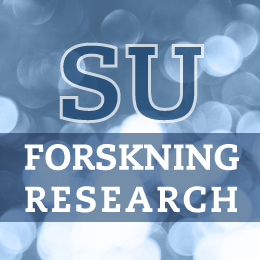Research group Mats Nilsson's research group
Our work is focused on the development of novel molecular analysis concepts for research and diagnostics, focused on infectious and cancer diagnostics. Our approach is interdisciplinary, spanning from physics to clinical research, with the goal of providing industrial products available to the scientific community and hospital laboratories.
Group description
Molecular Diagnostics
Summary
Our work is focused on development of novel molecular analysis concept for use in research and diagnostics, with primary focus on infectious and cancer diagnostics. We address development of both fundamental assay architecture and novel devices. Our research is based on a cross-disciplinary approach involving extensive collaboration with scientist ranging from physics and engineering to biomedical and clinical research, and with the ultimate goal of translating the research into industrial products to make the technologies available for the scientific community and hospital labs.
Background
Our ability to generate molecular data and knowledge about biological samples is always limited by the available analysis techniques. Improvements in analysis techniques can thus be expected to generate better knowledge about biological systems that can be used for improved therapies and diagnostics. A current trend in drug development is that these therapies are more targeted to a certain molecular defect, which means that patients will need to undergo a diagnostic test to establish the molecular cause for the disease in the individual patient to prescribe the right drug. Such molecular diagnostics has become a central element of the personalized medicine paradigm. Powerful research tools are not always suitable for the diagnostic setting, where tests needs to be very reliable, automated, usually relatively rapid, inexpensive, and fit the sample logistics and throughput of a typical hospital lab.
Research
We aim to develop molecular analysis techniques and concepts to serve both fundamental biomedical research and diagnostics. The fundament of our research is based on advanced molecular tools based on nucleic acid processing enzymes and probes. A key element is the concept of probe and target circularization reaction that has proven useful due to multiplexing advantages, exquisite specificity, and possibility to generate molecular clones through the rolling circle amplification mechanism (RCA). The circularization concept has been used in the padlock1-4 and selector6,8-9,12 probe technologies developed in our lab. The selector technology is a technique for targeted ultra-deep next generation sequencing suitable for diagnostics and is now commercially available as HaloPlex kits from Agilent. Padlock probes combined with RCA provides interesting opportunities to build assays suitable for diagnostics. First, due to the single-molecule sensitivity of these assays, they can be used for highly precise digital quantification7. Second, they can be used to elicit novel magnetic or electric biosensor readouts, that can be used for hand held devices10,15. Third, they seem to be suitable for automation in devices of different sizes for different diagnostic settings, which we are exploring in a number of projects. Finally, they can be implemented in situ to detect and digitally quantify DNA and RNA sequences resolving single-nucleotide variants at micro-meter resolution5,11. We are currently implementing this technology for diagnostics in molecular pathology13. We are now putting a lot of effort in developing an in situ sequencing approach, combining our in situ analysis technique with next generation sequencing chemistry to achieve in situ sequencing. With this technique we can sequence DNA and RNA molecules in the preserved context of fixed cells and tissue sections and it can be applied for massively multiplexed expression profiling, splice variant mapping, and mutation detection in situ14.
Group members
Group managers
Mats Nilsson
Professor of Biochemistry

Members
Yimin Zou
PhD student

Mengping Long
Postdoc

Victoria Muliadi
PhD Student

Rapolas Spalinskas
Staff Scientist

Taobo Hu
Postdoctor

Agustin Robles Remacho
Guest researcher

Christina Bekiari
Research assistant

Augusta Jensen
PhD Student

Erik Reinhold Samuelsson
PhD student

Maria Escriva Conde
PhD student

Marco Grillo
Researcher

Saga Helgadottir
Postdoc

Hao Zhe Lee
PhD student

Anastasia Magoulopoulou
PhD student

Sergio Marco Salas
Postdoc

Nick Shakari
PhD student

Katarina Tiklova
Head of unit

Chika Yokota
Head of unit






